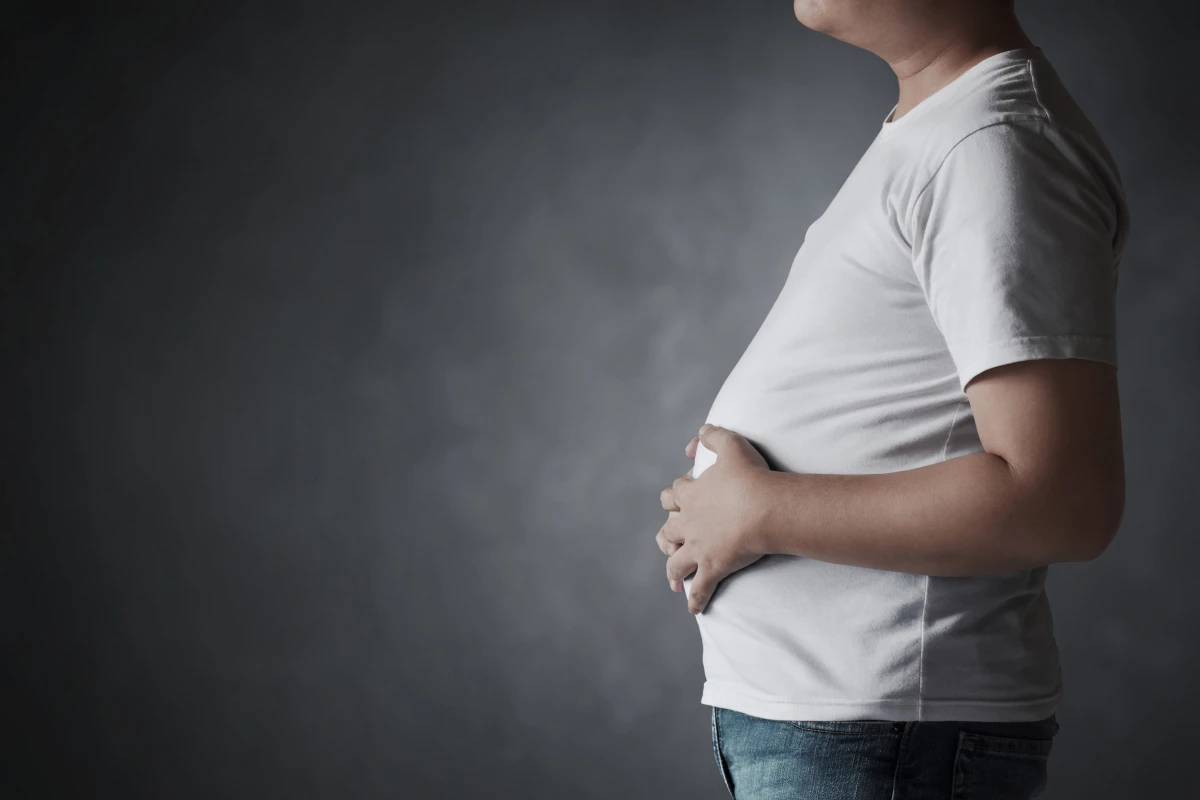In the first study of its kind, excess abdominal fat has been associated with chronic pain, but the good news is that losing weight that can reduce waistlines could help relieve widespread musculoskeletal conditions.
Researchers from the University of Tasmania, the University of Western Australia and Monash University looked at UK Biobank data of 32,409 people who had undergone MRI scans of their abdomen regions to assess fat deposits – both around organs (visceral adipose tissue) and just under the skin (subcutaneous adipose tissue). These patients, at the time of the scans, were also asked about pain in their back, neck, shoulders, hips, knees or "all over the body" that had existed for three months or longer.
From this cohort, 638 patients had their MRI and pain analyses revisited two years after their initial MRIs.
What they found was that there was an association between those two types of abdominal fat deposits and chronic pain prevalence, and researchers used a ratio combining visceral adipose tissue (VAT), subcutaneous adipose tissue (SAT), and pain (VAT:SAT ratio). Women, who represented 51% of the participants, had a higher widespread chronic pain when abdominal fat came into play, with twice as many pain sites when VAT was elevated, and 60% more chronic pain with high SAT as well as the VAT:SAT ratio. For men, greater chronic pain was associated with 34% (VAT), 39% (SAT) and 13% (VAT:SAT ratio).
"Abdominal adipose tissue was associated with chronic musculoskeletal pain, suggesting that excessive and ectopic fat depositions may be involved in the pathogenesis of multisite and widespread chronic musculoskeletal pain," the researchers noted. "The identified stronger effects in women than men may reflect sex differences in fat distribution and hormones."
While observational and a small sample study, with a mean age of 55 years, the results suggest a need for a wider and long-term study of the association between abdominal fat and widespread chronic pain. But it's the first time the condition has been linked to waistline size, rather than overall weight and obesity. And the higher rate of pain in women with VAT and SAT fat deposits and their potential link to hormones and fat distribution also opens the door for further research into this sex-dependent association.
Previously, excess abdominal fat deposits have been associated with a range of health issues, including dementia (higher in men), diabetes and even a higher risk of early death.
The good news in the current study, the researchers say, is that reducing your waistline may help alleviate a range of chronic pain issues, instead of the need for medication to target the pain sites.
"Excessive abdominal adiposity is implicated in the pathogenesis of chronic pain, including visceral and subcutaneous adipose tissue," they added. "Therefore, reducing abdominal adiposity may be considered a target for chronic pain management, particularly in those with pain in multiple sites and widespread pain."
The research was published in the journal Regional Anesthesia & Pain Medicine.
Sources: University of Tasmania, the University of Western Australia, Monash University via Scimex





